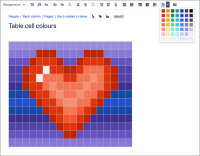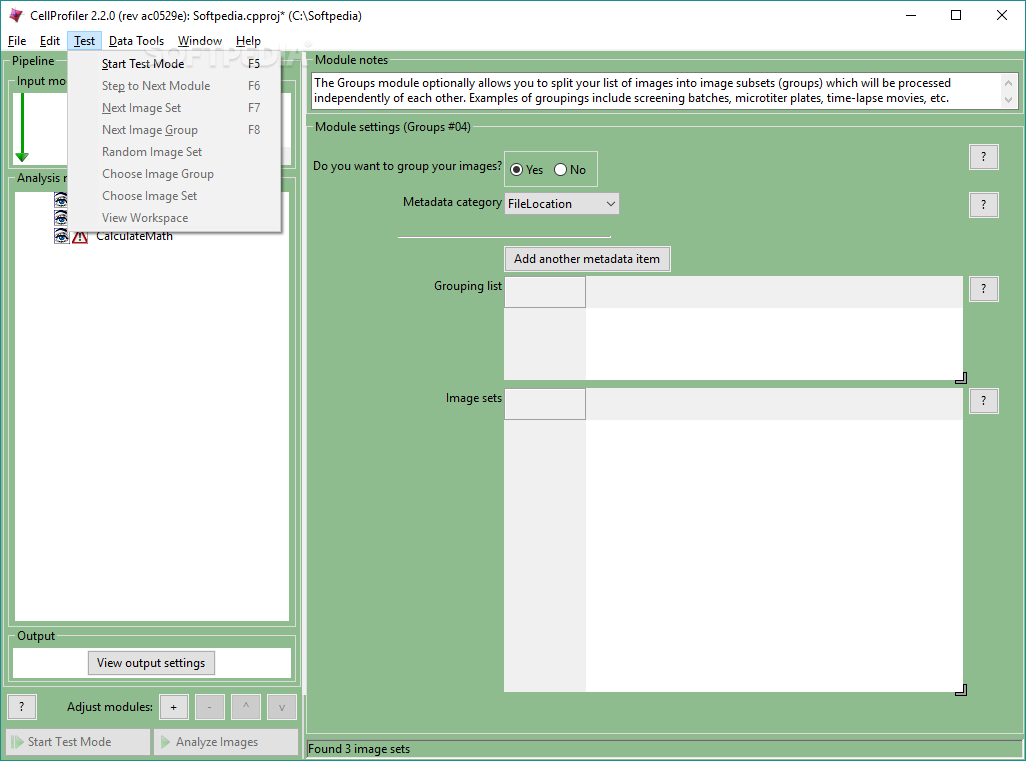
In this report, we demonstrate a way of circumventing limitations in surface creation by applying the Hue-Saturation-Brightness (HSB) surface creation workflow to deal with multi-parametric fluorescent images through mathematically transforming images into hue, saturation and brightness channels. In addition, since decisions on pixel co-localizations have to be made in advance before the complete set of surfaces are created, the results are often highly arbitrary and subjective, and mistakes easily remain undiscovered. Correcting them typically involves the wholesale repetition of previous work, which can be extremely time-consuming. Furthermore, in this traditional workflow, the cycles of co-localization channel generation and masking is sequential, which means that early mistakes are directly carried over to subsequent work. Consequently, this process becomes exponentially laborious with the increasing number of markers. However, this solution for generating surfaces becomes a bottleneck when dealing with cell types that express more than two markers, since co-localization channels are generated on a pairwise basis, and multiple co-localization channels will be needed to fully capture the possible combinations. One of the existing approaches (which we term traditional) is to identify co-localizing pixels in order to generate new channels that can be used for surface creation 5, 7, while deleting these pixels from the original channels in order to prevent surface duplication (i.e., masking).

#CELLPROFILER UNMIX COLOR HOW TO#
However, a thorny issue faced by users when attempting histocytometry is how to deal with cells that are stained with more than one color, as they exist in multiple channels, when the process of surface creation is currently designed to work only on single channels. This technique of multiplex staining coupled with histocytometry becomes a powerful tool to identify the tissue localization of different cell subsets 7, 8, 9.

In recent times, the availability of a wider variety of fluorophores with distinct fluorescent spectra has led to the increasingly common use of multiplex staining 6.

#CELLPROFILER UNMIX COLOR SOFTWARE#
Critical statistics such as the levels of marker expression, cell size and morphology can then be derived from these surfaces, which can be further analyzed using statistical analysis software, or converted and visualized in flow cytometry-style dot plots using software such as FlowJo in a method termed histocytometry 5. Programs 3 and algorithms for image segmentation to determine which objects certain pixels belong to (e.g., nuclei, cell cytoplasm), measurement of cellular or subcellular features after segmentation and machine-learning algorithms for classifying large datasets 4 are indispensable tools that have been developed for carrying out image cytometry.Īt present, a common way of quantifying three-dimensional data from image stacks is by creating virtual polygon mesh models, called surfaces, that simulate the shape of structures of interest (e.g., cells), typically by using commercial image processing software. The field of image cytometry thus emerged to provide quantitative readouts for images of single cells to whole organisms 1, 2. Images contain invaluable information, such as spatial localization and cell-cell interactions, which other techniques such as immunophenotyping using flow cytometry and transcriptomics cannot easily provide. We demonstrate the utility of this workflow in static and dynamic imaging datasets of a needlestick injury on the mouse ear, and we believe this scalable and intuitive approach will improve the ease of performing histocytometry on biological samples.Ī perennial problem when dealing with biological images is in translating qualitative data within the image into quantitative data for further analysis.

Spectral compensation can also be performed after surface creation to accurately resolve different signals. We propose the application of the hue-saturation-brightness color space to streamline this process, which produces complete surfaces, and allows the user to have a global view of the data before flexibly defining cell subsets. One way of dealing with structures stained with multiple markers in three-dimensional images, is carrying out multiple rounds of channel co-localization and image masking before surface creation, which is cumbersome and laborious. Image cytometry is the process of converting image data to flow cytometry-style plots, and it usually requires computer-aided surface creation to extract out statistics for cells or structures.


 0 kommentar(er)
0 kommentar(er)
